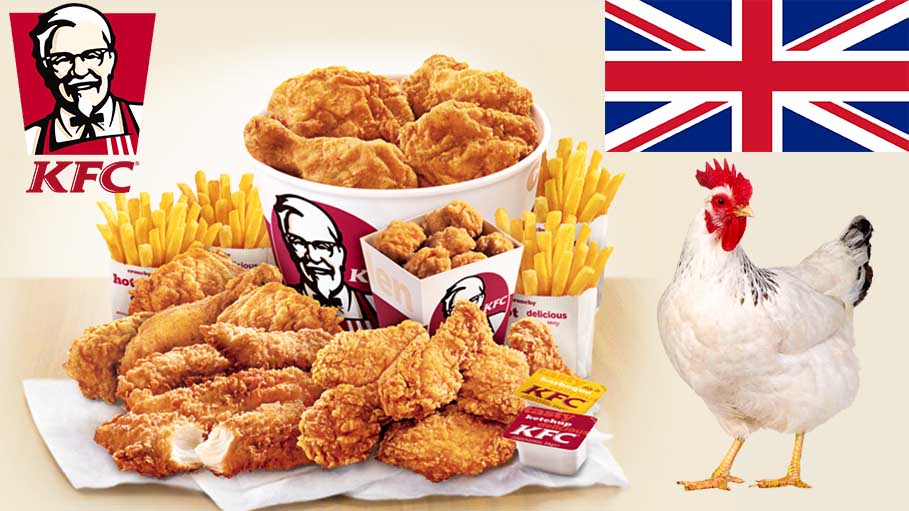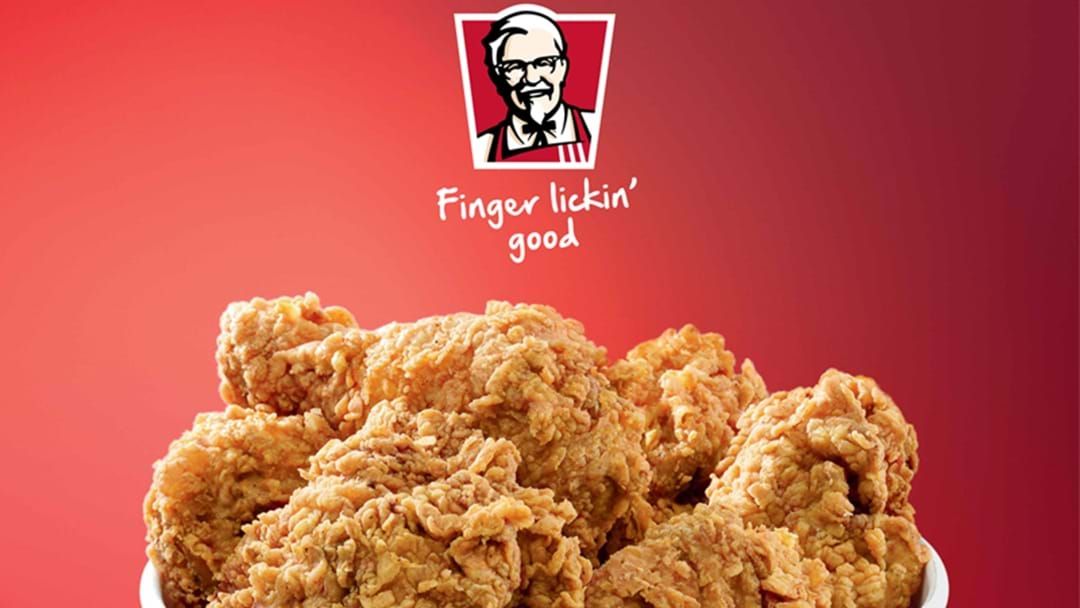The product under analysis is KFC’s Fried Chicken, specifically, the rand known as the original Recipe. Although the product has been criticized for its unhealthy nature, it remains one of the most frequently purchased brands (Dittfurth et al., 2019). KFC’s Fried Chicken is featured in a number of commercials, two of which, namely, the UK and the U.S. ones, provide completely different approaches to marketing and representing the brand.
The Message of the Commercial
Although the main message behind the two commercials in question is the same and basically states that KFC’s Fried Chicken is a superior meal compared to products by other fast food chains, he marketing approaches used in the U.S. and the UK to promote KFC’s fried chicken are quite different. Although both commercials manage to convey the same idea of KFC fried chicken being delicious, the UK commercial is much more memorable despite the lack of key images and people, such as Colonel Sanders (Rahi et al., 2017). Therefore, the U.S. marketing for KFC should consider incorporating storytelling into commercials so that they could resonate with viewers.
Commercial’s Target Market
One of the main advantages of the UK commercial for KFC is that it manages to target a very broad audience. Due to the absence of the spoken text, as well as the images that appeal directly to a specific demographic, the commercial remains timeless, while its unique plot makes it quite captivating to watch. The plot points that are supposed to be fun elicit at least a smile, which helps to make the product all the more relatable and memorable.
Indeed, although the implicit meanings of both commercials is the same, the approach that they use to encourage their target audience to take action are strikingly different. Namely, the U.S. commercial is very straightforward in its approach since it has an actor portraying Colonel Sanders and encouraging the audience to try the product. However, the UK commercial is much more elaborate, and its main message is never voiced directly, which makes the commercial slightly more subtle (KFC UK and Ireland, 2018). Particularly, the UK commercial is silent for the most part, with no dialogue taking place in it at any point in time (se Fig. 1).
As soon as the chicken meets the turkey according to the scenario, the expected battle does not even take place, and the turkey makes way for the chicken as the superior food. Although the message is absolutely clear, it is more overt than the one in the UK commercial (Cha & Seo, 2019). As a result, more people are tricked into watching it, which means that KFC has embraced a larger audience in the UK.

Relevant Cultural Characteristics
Surprisingly, the commercials in question have very few cultural signifiers, which makes both of them applicable to any settings. Indeed, whereas the UK one completely relies on body language and signs that are common across all cultures, the one for U.S. citizens does not change from a cultural perspective when translated into another language (see Fig. 2). Specifically, the setting, the gestures, and the colors used in the commercial remain appealing and encouraging people to consider purchasing KFC products (Kobayashi et al., 2018).
Arguably, the comedic nature of the UK commercial, which is built entirely around the Christmas tradition of roasting a turkey, may be partially lost when translated into the culture in which the specified tradition is either nonexistent or unknown. Nevertheless, even as a standalone story, the narrative is quite entertaining, if a bit random.

Macroenvironmental Factors
Nevertheless, both commercials have evidently been shaped by macro environmental factors to a certain degree. For instance, while being quite humorous, the UK commercial is thoroughly divorced from any specific culture, except from the slight nod to the Christian tradition of celebrating Christmas by cooking turkey. In turn, the political, regulatory, technological, and environmental factors have not affected the content of the commercial. As for the economic factors, the commercial is driven by the need to appeal to middle-class citizens as its target demographic, as seen from the overall environment (Ballestar et al., 2018).
In its turn, the American commercial incorporates one of the key symbols of the U.S. culture (Ballestar et al., 2018). Namely, Santa Claus, thus, immediately placing it in a context and targeting mostly European middle-class audiences. Similarly to the UK commercial, in the American one, the political, regulatory, technological, and environmental factors never come into play.
Marketing Strategies
Comparing the marketing strategies that KFC uses in the U.S. and the UK, one will have to admit that the UK ones are more effective, whereas the U.S. ones seem to rely on the popularity of the brand with the local audiences. Therefore, the strategy used by the U.S. division of KFC is unlikely to attract strikingly new audiences. For this reason, the U.S. KFC will have to consider new approaches that will help to introduce the brand to an unprepared audience. As a result, KFC will be able to make its core message more palatable and original, gaining the attention of new customers.
Marketing and Culture
Given the increased diversity of the UK population, the choice not to center a particular culture in the UK commercial appears to be quite legitimate. By making the visuals thoroughly divorced from the mainstream culture yet appealing to the European audiences implicitly, the UK commercial has managed to embrace a wide range of audiences. Compared to the UK approach, the marketing of the U.S. KFC fried Chicken seems to be geared toward multiculturalism to a much lesser degree. Therefore, the commercial could be seen as less effective.
Conclusion and Recommendations
By using storytelling in its commercials, the U.S. KFC will be able to attract greater attention to its brand product, namely, fried chicken, which is why the UK approach toward promoting KFC via commercials should be taken as an example. Although the UK strategy rarely includes key figures in the KFC history, such as Colonel Sanders, the stories that they tell have a much greater staying power. As a result, British customers are more eager to purchase KFC fried chicken than the U.S. demographic.
Consequently, incorporating storytelling into the marketing approach will lead to better outcomes for the company and its market performance. Remarkably, the UK advertisement targets a significantly larger portion of the population since it creates an image and a story that are immediately relatable to both children and adults. Therefore, the U.S. KFC should approach the process of marketing from a perspective similar to that one of the British company division.
References
Ballestar, M. T., Grau-Carles, P., & Sainz, J. (2018). Customer segmentation in e-commerce: Applications to the cashback business model. Journal of Business Research, 88, 407-414. Web.
Cha, S. S., & Seo, B. K. (2019). The effect of brand trust of home meal replacement on repurchasing in online shopping. The Journal of Business Economics and Environmental Studies, 9(3), 21-26. Web.
Chicken less United Kingdom with KFC’s closure. (n.d.). Web.
Dittfurth, E., Gerhardt, S., & Joiner, S. (2019). Fast Food Chicken: To franchise or not? Journal of Business and Behavioral Sciences, 31(2), 135-147.
Jennings, R. (2018). KFC Kentucky Buckets TV ad. [Video]. Youtube. Web.
KFC launches brand new spicy menu item. (2017). Web.
KFC UK and Ireland. (2018). KFC UK Christmas advert 2018 [Video]. Youtube. Web.
Kobayashi, K., Jackson, S. J., & Sam, M. P. (2018). Multiple dimensions of mediation within transnational advertising production: Cultural intermediaries as shapers of emerging cultural capital. Consumption Markets & Culture, 21(2), 129-146. Web.
Rahi, S., Yasin, N. M., & Alnaser, F. M. (2017). Measuring the role of website design, assurance, customer service and brand image towards customer loyalty and intention to adopt internet banking. The Journal of Internet Banking and Commerce, 1-18.
